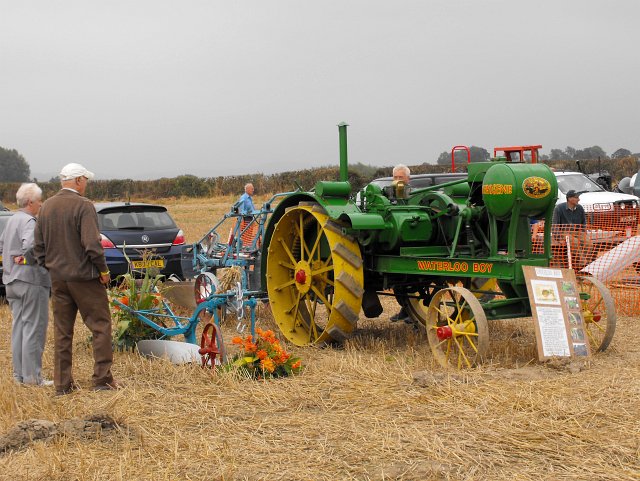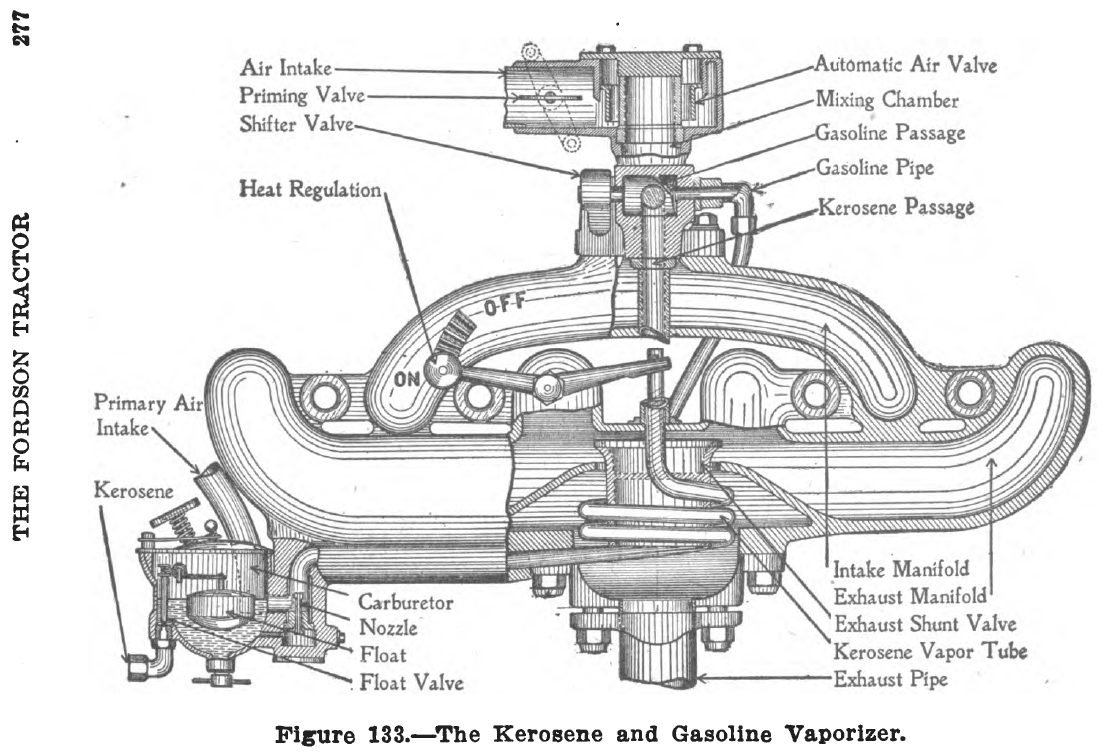Petrol-paraffin on:
[Wikipedia]
[Google]
[Amazon]
 A petrol-paraffin engine, TVO engine (United Kingdom) or gasoline-kerosene engine (
A petrol-paraffin engine, TVO engine (United Kingdom) or gasoline-kerosene engine (
 A petrol-paraffin engine differs from a single-fuel
A petrol-paraffin engine differs from a single-fuel
 A petrol-paraffin engine, TVO engine (United Kingdom) or gasoline-kerosene engine (
A petrol-paraffin engine, TVO engine (United Kingdom) or gasoline-kerosene engine (North America
North America is a continent in the Northern Hemisphere, Northern and Western Hemisphere, Western hemispheres. North America is bordered to the north by the Arctic Ocean, to the east by the Atlantic Ocean, to the southeast by South Ameri ...
) is an old-fashioned type of dual-fuel
A flexible-fuel vehicle (FFV) or dual-fuel vehicle (colloquially called a flex-fuel vehicle) is an alternative fuel vehicle with an internal combustion engine designed to run on more than one fuel, usually gasoline blended with either ethanol o ...
internal combustion engine
An internal combustion engine (ICE or IC engine) is a heat engine in which the combustion of a fuel occurs with an oxidizer (usually air) in a combustion chamber that is an integral part of the working fluid flow circuit. In an internal comb ...
with spark-ignition
A spark-ignition engine (SI engine) is an internal combustion engine, generally a petrol engine, where the combustion process of the air-fuel mixture is ignited by a spark from a spark plug. This is in contrast to compression-ignition engines, ty ...
, designed to start on petrol (gasoline
Gasoline ( North American English) or petrol ( Commonwealth English) is a petrochemical product characterized as a transparent, yellowish, and flammable liquid normally used as a fuel for spark-ignited internal combustion engines. When for ...
) and then to switch to run on paraffin (kerosene
Kerosene, or paraffin, is a combustibility, combustible hydrocarbon liquid which is derived from petroleum. It is widely used as a fuel in Aviation fuel, aviation as well as households. Its name derives from the Greek (''kērós'') meaning " ...
) once the engine is warm. The grade of paraffin used is known as tractor vaporising oil
Tractor vaporising oil (TVO) is a fuel for petrol-paraffin engines. It is seldom made or used today. In the United Kingdom and Australia, after the Second World War, it was commonly used for tractors until diesel engines became commonplace, es ...
in the UK.
Advantages
Petrol-paraffin engines carry certain advantages, though time and technology has rendered them mostly outmoded. # Paraffin, historically, was cheaper and/or more readily available in certain markets, especially post-WWII Britain, a major market for the fuel. # Being less flammable, paraffin is safer to store. # Being less volatile, paraffin is less likely to go "stale
Staling, or "going stale", is a chemical and physical process in bread and similar foods that reduces their palatability. Stale bread is dry and hard, making it less suitable for different culinary uses than fresh bread. Countermeasures and desta ...
" in the tank.
The cost and availability advantages, however, have become illusory with time; paraffin, once widely available as a cheap fuel, has become rarer and more expensive, particularly in developed countries. Also, while some older marine craft still use marine petrol-paraffin engines, more recent inboard marine powertrains now tend to be either marinised petrol engine
A petrol engine (gasoline engine in American and Canadian English) is an internal combustion engine designed to run on petrol (gasoline). Petrol engines can often be adapted to also run on fuels such as liquefied petroleum gas and ethanol blends ...
s, or various diesels, running on fuels as wide-ranging as plain road diesel to heavy fuel oil
Heavy fuel oil (HFO) is a category of fuel oils of a tar-like consistency. Also known as bunker fuel, or residual fuel oil, HFO is the result or remnant from the distillation and cracking process of petroleum. For this reason, HFO contains seve ...
s.
Equipment
 A petrol-paraffin engine differs from a single-fuel
A petrol-paraffin engine differs from a single-fuel petrol engine
A petrol engine (gasoline engine in American and Canadian English) is an internal combustion engine designed to run on petrol (gasoline). Petrol engines can often be adapted to also run on fuels such as liquefied petroleum gas and ethanol blends ...
in that two independent fuel tanks containing petrol and paraffin (respectively) are required, but both fuels may be supplied through the same carburetor
A carburetor (also spelled carburettor or carburetter)
is a device used by a gasoline internal combustion engine to control and mix air and fuel entering the engine. The primary method of adding fuel to the intake air is through the Ventu ...
or fuel injection
Fuel injection is the introduction of fuel in an internal combustion engine, most commonly automotive engines, by the means of a fuel injector. This article focuses on fuel injection in reciprocating piston and Wankel rotary engines.
All c ...
system. An example of a fuel-injected petrol-paraffin engine is the Hesselman engine
The Hesselman engine is a hybrid between a petrol engine and a diesel engine. It was designed and introduced in 1925 by Sweden, Swedish engineer Jonas Hesselman.
In a Hesselman engine, fuel is not injected during the suction stroke along with th ...
.
Paraffin is less volatile than petrol, and will not normally ignite at ambient temperatures, so the petrol-paraffin engine is started using petrol, and only when the engine has attained a sufficient operating temperature
An operating temperature is the allowable temperature range of the local ambient environment at which an electrical or mechanical device operates. The device will operate effectively within a specified temperature range which varies based on the de ...
will the engine be switched to paraffin. This switching can be done manually or automatically. Some engines use a vaporizer, which uses heat from the exhaust manifold
In automotive engineering, an exhaust manifold collects the exhaust gases from multiple cylinders into one pipe. The word ''manifold'' comes from the Old English word ''manigfeald'' (from the Anglo-Saxon ''manig'' anyand ''feald'' old and ref ...
to vaporize
Vaporization (or vapo(u)risation) of an element or compound is a phase transition from the liquid phase to vapor. There are two types of vaporization: evaporation and boiling. Evaporation is a surface phenomenon, whereas boiling is a bulk phenomen ...
the fuel entering the intake system.
Applications
Traditional applications
Petrol-paraffin engines were traditionally found inmotor boat
A motorboat or powerboat is a boat that is exclusively powered by an engine; faster examples may be called "speedboats".
Some motorboats are fitted with inboard motor, inboard engines, others have an outboard motor installed on the rear, contain ...
s, fishing vessel
A fishing vessel is a boat or ship used to fishing, catch fish and other valuable nektonic aquatic animals (e.g. shrimps/prawns, krills, coleoids, etc.) in the sea, lake or river. Humans have used different kinds of surface vessels in commercial ...
s, small tractor
A tractor is an engineering vehicle specifically designed to deliver a high tractive effort (or torque) at slow speeds, for the purposes of hauling a Trailer (vehicle), trailer or machinery such as that used in agriculture, mining or constructio ...
s, light railway
A light railway is a Rail transport, railway built at lower costs and to lower standards than typical "heavy rail": it uses lighter-weight track, and may have more Grade (slope), steep gradients and Minimum railway curve radius, tight curves to ...
locomotive
A locomotive is a rail transport, rail vehicle that provides the motive power for a train. Traditionally, locomotives pulled trains from the front. However, Push–pull train, push–pull operation has become common, and in the pursuit for ...
s, and stationary auxiliary engines, but not in cars or motorcycles.
The Milnes-Daimler motor bus of 1904 (based on the Cannstatt Daimler lorry), operated in London by Thomas Tilling
The Tilling Group was one of two conglomerates that controlled almost all of the major bus operators in the United Kingdom between World Wars I and II and until nationalisation in 1948.
Tilling, together with the other conglomerate, British E ...
, ran on either petrol or paraffin, but for starting the engine, or frequent stop-start work, petrol continuously was the preferable option. The airflow from the carburettor
A carburetor (also spelled carburettor or carburetter)
is a device used by a gasoline internal combustion engine to control and mix air and fuel entering the engine. The primary method of adding fuel to the intake air is through the Vent ...
was heated by diverted exhaust gas
Exhaust gas or flue gas is emitted as a result of the combustion of fuels such as natural gas, gasoline (petrol), diesel fuel, fuel oil, biodiesel blends, or coal. According to the type of engine, it is discharged into the atmosphere through ...
.
Design
Petrol-paraffin fuelling is suitable forfour-stroke cycle
A four-stroke (also four-cycle) engine is an internal combustion (IC) engine in which the piston completes four separate strokes while turning the crankshaft. A stroke refers to the full travel of the piston along the cylinder, in either directio ...
piston engines and Wankel engine
The Wankel engine (, ) is a type of internal combustion engine using an eccentric (mechanism), eccentric Pistonless rotary engine, rotary design to convert pressure into rotating motion. The concept was proven by German engineer Felix Wankel, f ...
s. A petrol/paraffin engine tends to run hotter whilst burning paraffin, and so the cooling system must be sufficiently robust. Being slower burning, the paraffin requires the longer combustion period that a four-stroke engine can provide; so two-stroke
A two-stroke (or two-stroke cycle) engine is a type of internal combustion engine that completes a power cycle with two strokes of the piston, one up and one down, in one revolution of the crankshaft in contrast to a four-stroke engine which re ...
versions are rare. Although modern petrol engines may have compression ratios typically between 9:1 and 12:1, a petrol-paraffin engine requires a lower compression ratio
The compression ratio is the ratio between the maximum and minimum volume during the compression stage of the power cycle in a piston or Wankel engine.
A fundamental specification for such engines, it can be measured in two different ways. Th ...
of 8:1 or less, to avoid pre-ignition of the fuel-air mixture which would cause damage from engine knocking
In spark-ignition internal combustion engines, knocking (also knock, detonation, spark knock, pinging or pinking) occurs when combustion of some of the air/fuel mixture in the cylinder does not result from propagation of the flame front ignite ...
.
Fuel
The fuel used in petrol-paraffin engines was known asTractor vaporising oil
Tractor vaporising oil (TVO) is a fuel for petrol-paraffin engines. It is seldom made or used today. In the United Kingdom and Australia, after the Second World War, it was commonly used for tractors until diesel engines became commonplace, es ...
(TVO) in the United Kingdom and as Power kerosene in Australia. TVO was withdrawn from sale by UK suppliers in 1974 but has been re-introduced by at least one supplier.
Naphthalene locomotive
A railway locomotive using ''solid''naphthalene
Naphthalene is an organic compound with formula . It is the simplest polycyclic aromatic hydrocarbon, and is a white Crystal, crystalline solid with a characteristic odor that is detectable at concentrations as low as 0.08 Parts-per notation ...
was built by Schneider-Creusot
Schneider et Compagnie, also known as Schneider-Creusot for its birthplace in the French town of Le Creusot, was a historic iron and steel-mill company which became a major arms manufacturer. In the 1960s, it was taken over by the Belgian Empain ...
in France in 1913. It was a 70 bhp petrol-paraffin engine, but using solid naphthalene rather than paraffin, simply as a cheaper fuel. The naphthalene was melted and vaporised by a water jacket, heated by the engine.
References
{{Reflist, 30em Internal combustion piston engines Gasoline engines